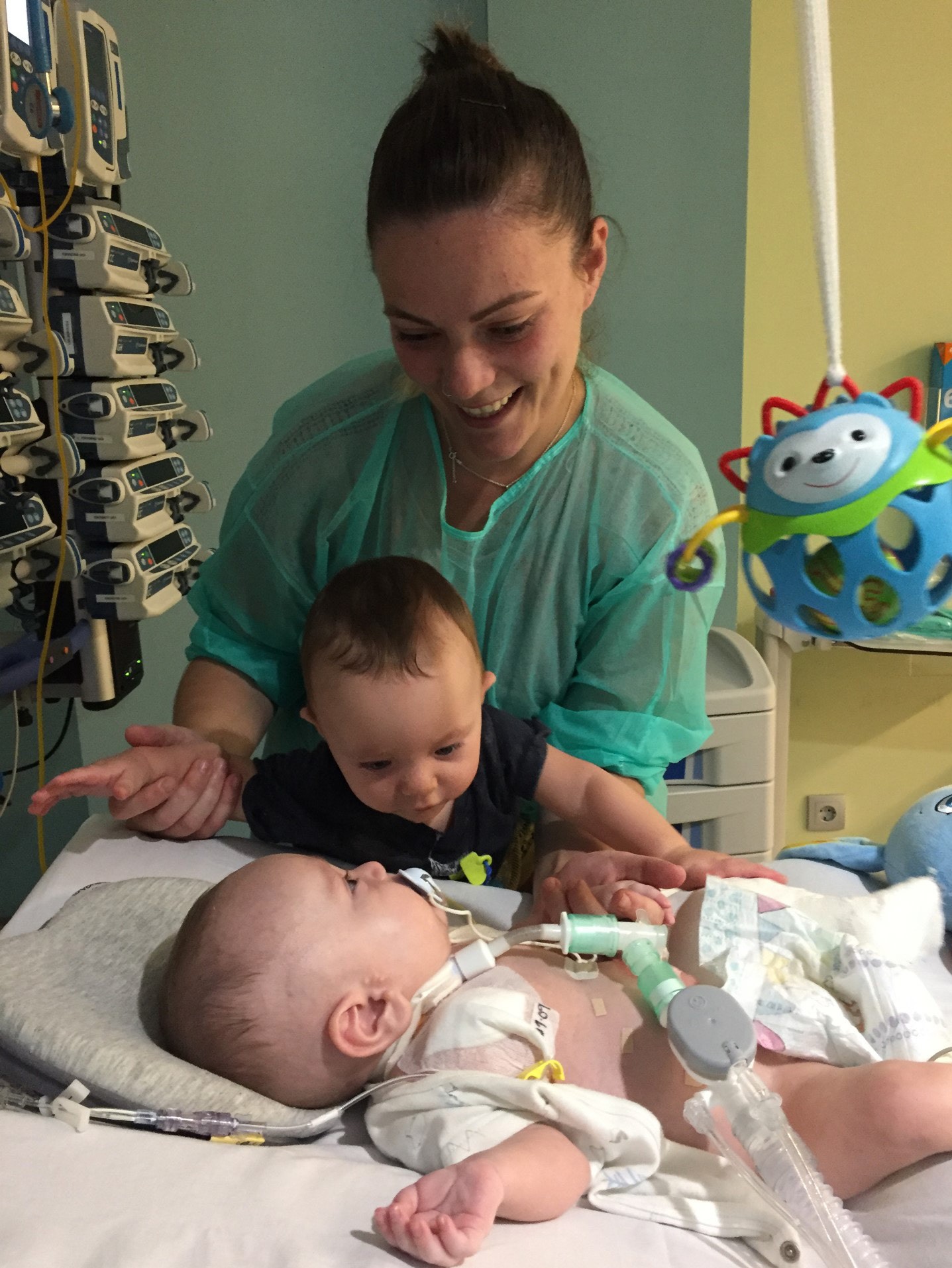ICU Management & Practice, Volume 23 - Issue 5, 2023
Discharging ventilated children home is a difficult challenge in which the training of families is essential. We present our hospital's transition programme for ventilated children going home, which is based on a family-centred model.
Introduction
The progressive improvement of neonatal intensive care (NICU) and paediatric intensive care (PICU) over the last two decades, as well as new surgical procedures for complex congenital malformations, has improved the survival of paediatric patients. However, some of these patients remain reliant on technology, especially those with ventilator-dependent chronic respiratory failure. According to the British guidelines set out by Jardine and Wallis (1998), long-term ventilation is defined in “any child who, when medically stable, continues to require a mechanical aid for breathing, after an acknowledged failure to wean, or a slow wean, three months after the institution of ventilation”. U.S. guidelines published by Sterni et al. in 2016 stated that “the well-being of a technology-dependent child is best placed with family/caregivers in the community, and all aspects of health care should be family-centred, coordinated, and integrated with the community services”. Nevertheless, ventilator dependence is often a major impediment to early discharge in many countries, leading to lengthened hospital stays in critical care units.
The financial burden associated with the equipment needed for home ventilation is not limited to the initial cost of the ventilator since the pertinent materials, maintenance and correction of malfunctions must also be considered. However, in countries where families have the option of receiving support from health personnel at home, most of the associated budget will be allocated to this. It is important to note that the discharge process can look totally different depending on the national health resources available in each country to support families with insufficient funds. For example, the current Australian clinical guidelines strongly recommend a publicly funded system to facilitate family-centred care for all patients (Nixon et al. 2021).
Below, we describe the main problems and barriers to discharging these patients in order to ease the learning curve for future home ventilation teams. The challenge of transferring ventilator-dependent children, comprising those who depend on ventilation for life support, such as tracheotomised and invasively ventilated patients, and those on non-invasive support for more than 16 hours a day, is completely different than that posed by patients receiving elective non-invasive support for health maintenance and disease prevention. Due to time and space limitations, we will focus on the former.
At our centre, Barcelona’s Hospital Sant Joan de Déu, a paediatric home ventilation programme has been under development over the past 25 years. Today, this programme supports 150 children who mainly live in the region of Catalonia. Looking back at the programme’s historical data, it is apparent that the population requiring respiratory support has evolved through the years. Although neuromuscular patients are still frequent users of nocturnal respiratory support, the generalised use of non-invasive ventilation and CPAP has facilitated the improved management of patients suffering from breathing-related sleep disorders; thus, these individuals are currently the predominant population. In addition, the number of patients requiring a tracheostomy is increasing, but proportionally speaking, it remains below 10% of the total number.
The Process of Transferring a Baby on Long-Term Ventilation From the NICU to the PICU
The key point in this section is that most home ventilators are not approved to ventilate patients weighing less than five kilograms. Therefore, the question of when to transfer these young patients to the PICU depends heavily on the hospital’s policy. If the NICU cares for the patient until discharge, the neonatal team, together with the home ventilation team, must be adequately prepared. This includes using hospital ventilators that can meet the patient’s needs and introducing ventilation modes and/or parameters that are not common in premature infants but are sometimes required in PICU patients, such as the NAVA mode and higher PEEP levels. In our opinion, it is important to involve the members of the home ventilation team in the decision-making process from the beginning, even before deciding whether the patient can continue on non-invasive ventilation or should opt for tracheostomy ventilation. If a transfer to the PICU is required, this must either involve an experienced intensivist or working with a reference centre with extensive experience in home transfer.
It is equally important for the neonatal team to have knowledge regarding the management of tracheostomies and the proper training of parents to care for them and prevent their associated complications.
Generally speaking, premature babies or newborns with severe malformations that require postoperative management and prolonged ventilation require a long stay in the NICU. Logically, an emotional bond is established with the NICU team, which sometimes makes it difficult to find the optimal time for the transfer.
Both the NICU and the PICU are departments where intensive care is performed, but even in the same hospital, small differences can be observed in many aspects, such as mechanical ventilation, medication management, and more. These differences, which may be of little relevance to the patient’s evolution, can be viewed as radical for families, generating additional stress during the discharge process.
Handling the Transfer From the PICU to Home
Before transitioning to home care with chronic ventilation, the medical team should ensure that the patient has demonstrated medical stability for a period of at least one week prior to discharge, using unchanged home equipment and ventilator settings.
Thus, the equipment and supplies designed for home use must be tested before the patient is released. Such evaluation over a period of time ensures the effectiveness of ventilation, the patient’s tolerance for it, and the family’s understanding of how to manage it. For further information, the American Thoracic Society guidelines for chronic invasive paediatric ventilation at home provide insights on the necessary home supplies (Sterni et al. 2016). The delivery of monitoring devices such as pulse oximeters and backup devices like electric oxygen concentrators, as well as emergency supplies such as a self-inflating resuscitation bag, must be confirmed.
Transitioning to the home respirator
In infants weighing close to the five-kilogram limit, switching to a home ventilator must involve a careful selection of the ventilator mode and will also require meticulous adjustment of the parameters. The choice of tubing is also important, as it determines different critical aspects, including the response of the ventilator algorithms to leaks, the incidence of technical problems, and even comfort when travelling.
In connection with this, asynchrony is a common phenomenon in infants, with inspiratory asynchrony being the most prevalent. Ineffective effort is clinically relevant and will usually hinder patient progress. Each ventilator offers different capacities that can be evaluated and compared by looking at the data provided by the manufacturer. The key points in inspiratory synchrony are the activation delay and the 0.3-second area. Trigger delay is measured in milliseconds, and values greater than 150 milliseconds are not considered appropriate. Some devices improve trigger sensitivity by offering alternative flow sensors near the patient's mouth or even sophisticated algorithms. It is common to see formerly premature patients who are only able to activate the inspiratory trigger 20% to 30% of the time. Thus, to avoid patient fatigue, it is common for these patients to be put back on a conventional ventilator, usually prolonging their stay in the Critical Care Unit.
Based on randomised studies in premature neonates, which show the superiority of unsynchronised IPPV over CPAP in preventing reintubation, a similar ventilatory strategy can be used. Therefore, an assisted pressure control mode can be used by setting a respiratory rate close to the patient's respiratory rate and setting an adequate inspiratory time (Ti). We recommend calculating the patient’s Ti by dividing the duration of a full breath by three. This way, the patient can synchronise with the ventilator by receiving a controlled breath very close to the time they initiate a new breath. A correct Ti duration is important to avoid expiratory asynchrony which would increase the patient's work of breathing.
With regard to flow asynchrony, even if the patient correctly activates the ventilator trigger, the presence of leaks can affect the performance of the ventilator. The ability to pressurise varies from ventilator to ventilator, so flow asynchrony can be a major problem. Nowadays, tracheostomy tubes with low-pressure cuffs are commonly used to minimise leaks and consequently reduce this problem.
It is worth mentioning that there is a minority of patients who do not have inspiratory asynchrony and may benefit from the use of pressure support.
Training for family caregivers
Standards for training and assessing the proficiency of family caregivers vary among institutions. Families and their medical teams should agree on safety preparation and outline the number of responsible people available to help at home. For patients requiring invasive mechanical ventilation, it is recommended that at least two family caregivers be fully trained in all aspects of the child’s care prior to discharge. The patient’s reference nurse is responsible for training the parents or guardians during their stay in the PICU (Image 1).

The picture is published with the consent of the family
In addition to practical bedside training, family caregivers may often require additional education, especially to address scenarios that have not occurred during the child's hospitalisation. Simulation sessions can be very useful in improving the management of situations such as cannula obstruction or bronchoaspiration.
As part of this family training process, it is important to consider having the patient remain at the hospital, outside of the PICU, for a period of time, during which the family progressively takes control of the situation under supervision. At our centre, this is currently carried out in the paediatric ward or in an intermediate care centre called Casa Sofia, located a few minutes from the hospital.
The Future of Home Transfer
Intermediate Respiratory Care Units (IRCUs) or mechanical ventilation weaning centres have demonstrated their effectiveness and are already a reality for adults in many countries and for paediatric patients in a few Western countries. Their expansion into the medical mainstream will allow for shortening lengthy stays in the NICU and PICU and could also potentially shorten overall hospital stays. This kind of programme is poised to ultimately improve the experience of patients and their families.
Conclusion
The transfer of a ventilated child from the PICU to home is a complex process that includes a transition to a home respirator and the training of family and caregivers. The benefit of being discharged home is clear for the family, but some aspects related to childcare must be taken into account. A home ventilation programme is essential to help support families during this difficult process and ensure they get the training they need.
Conflict of Interest
None.
References:
Jardine E, Wallis C (1998) Core guidelines for the discharge home of the child on long-term assisted ventilation in the United Kingdom. Thorax. 53(9):762-767.
Nixon GM, Edwards EA, Cooper DM et al. (2021) Ventilatory support at home for children: a consensus statement from the Australasian paediatric respiratory group. Respirology. 26(10):920-937.
Sterni LM, Collaco JM, Baker CD et al. (2016) An Official American Thoracic Society Clinical Practice Guideline: Pediatric Chronic Home Invasive Ventilation. Am J Respir Crit Care Med. 193(8):e16-e35.
























